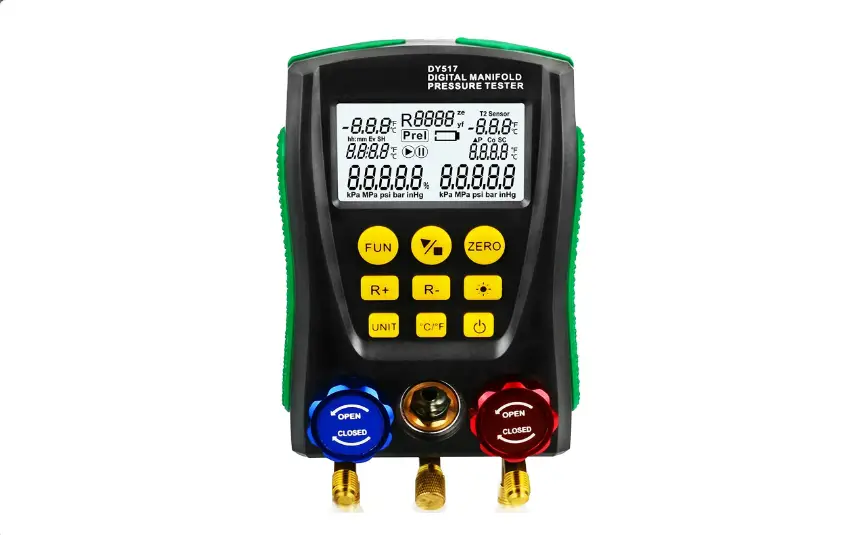Refrigerant analysis, right at the top of your to-do list, right? Or maybe not. Let’s change that. Because without it, your HVAC system might be running a race with a twisted ankle. Time to shed some light on this crucial topic!

Table of Contents
Understanding the Importance of Refrigerant Analysis
So, you’ve been neglecting your refrigerant? Don’t worry, it happens. But it’s time to start paying attention. Why? Because it’s a critical part of your HVAC’s health and performance.
Why Refrigerant Analysis is Essential
Think of it this way: Your HVAC system is like a car and the refrigerant is like its fuel. Would you let your car run on low-quality fuel? Didn’t think so. That’s why refrigerant analysis matters.
The Impact of Refrigerant Quality on System Performance
Your system’s performance is directly tied to your refrigerant. Imagine trying to bake a cake with expired flour. Not exactly the best, is it?
The Process of Refrigerant Analysis
Alright, so how do we go about this refrigerant analysis thing? First up, we need to sample the refrigerant. Then, we analyze it. Sound complicated? Don’t worry, it’s not rocket science!
Sampling the Refrigerant
Sampling the refrigerant is like tasting the soup before adding more salt. You need to know what you’re working with, right?
Analyzing the Sample
Now comes the fun part: analyzing the sample. It’s like solving a mystery, finding out what’s in there. And no, you don’t need a magnifying glass.
Spectroscopic Analysis
Spectroscopic analysis is our first tool. It’s like using a decoder ring to reveal the secrets of our refrigerant sample.
Gas Chromatography
Next up, gas chromatography. It’s like having a super-smart sorting machine that can separate all the different compounds in the sample.
Interpreting Refrigerant Analysis Results
Got your results? Great! But what do they mean? Relax, we’re here to guide you through it.
Understanding the Analysis Report
Think of your report like a map. It’s a guide to the health of your system. But don’t worry, you don’t need to be a cartographer to understand it.
Common Refrigerant Problems and Their Indications
Refrigerant problems can be like warning lights on your car’s dashboard. They’re telling you something’s wrong before it becomes a disaster.
Read more about refrigerants here – – Articles on Refrigerants: The Ultimate Guide to Understanding Them
The Role of Refrigerant Analysis Kit
Want to take control of your system’s health? A refrigerant analysis kit is like having your very own HVAC doctor’s kit.
The Components of a Refrigerant Analysis Kit
A typical kit comes with a few key tools. It’s like a toolbox for your HVAC system. Handy, right?
How to Use a Refrigerant Analysis Kit
Using a refrigerant analysis kit might seem like a daunting task, but it’s easier than you think. Imagine it as preparing a new recipe: it might look complicated at first, but once you understand each step, it’s pretty straightforward.
Step 1: Safety First: Before you start, make sure you’re wearing proper protective equipment. This could include safety glasses and gloves. Remember, dealing with refrigerants can be like dealing with raw meat in the kitchen: you need to handle it with care to avoid potential harm.
Step 2: Collecting the Sample: Your kit will come with a sample cylinder. This is like your mixing bowl. You’ll use it to collect the refrigerant sample. Make sure the cylinder is clean and dry before you begin. Then, attach the cylinder to the refrigerant source, and let the refrigerant flow into the cylinder. It’s like filling a water balloon: you want to get enough in there, but not so much that it overflows.
Step 3: Sealing the Sample: Once you have your sample, you need to seal it properly. Think of it like putting the lid on a Tupperware container: you want it secure to prevent any leaks.
Step 4: Analyzing the Sample: Now for the exciting part. Using the tools provided in your kit, you’ll analyze the refrigerant sample. This might involve spectroscopic analysis or gas chromatography, depending on your kit. It’s like doing a taste test: you’re trying to figure out what’s inside.
Step 5: Interpreting the Results: After analysis, you’ll be left with some results. Don’t panic if it looks like gibberish at first. Your kit should come with a guide to help you understand what these results mean. It’s like translating a foreign language: once you know the key phrases, it starts to make sense.
And there you have it! Five easy steps to using your refrigerant analysis kit. With a little practice, you’ll be a pro in no time. It’s like learning to ride a bike: tricky at first, but soon it becomes second nature.
Conclusion
So, there you have it. Refrigerant analysis is a critical part of maintaining your HVAC system. It’s like giving your system a regular health check. A little effort now can save a lot of trouble down the line.